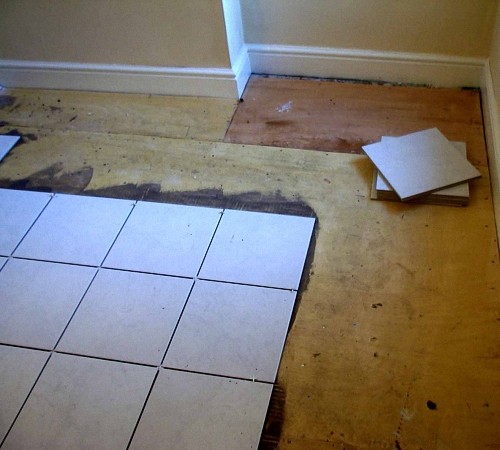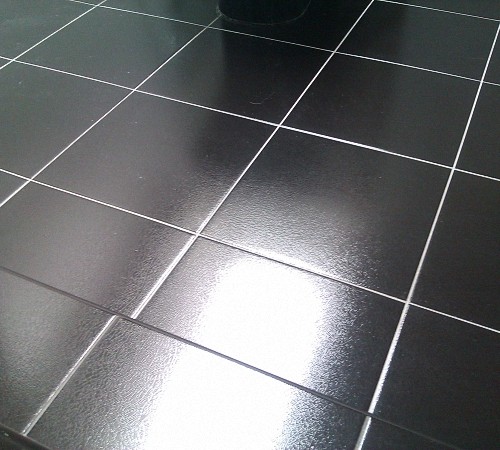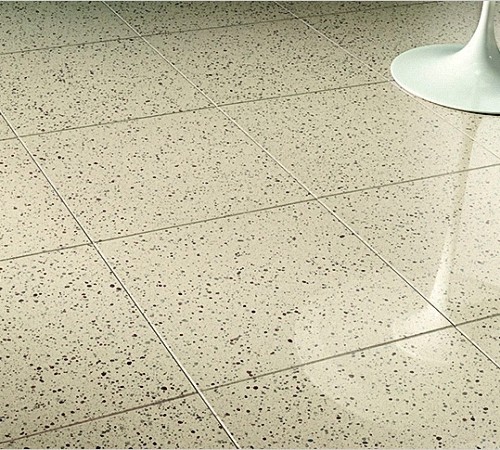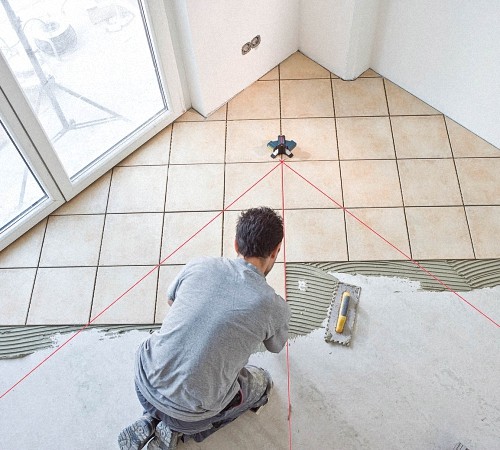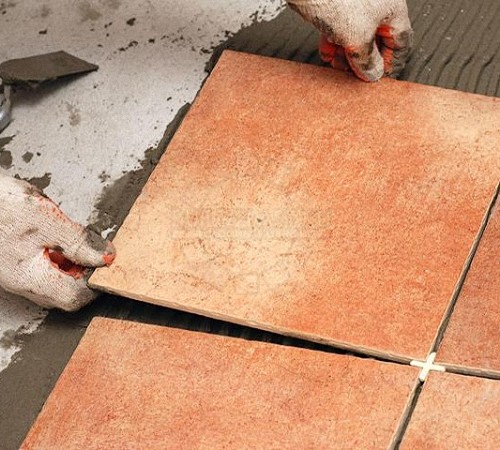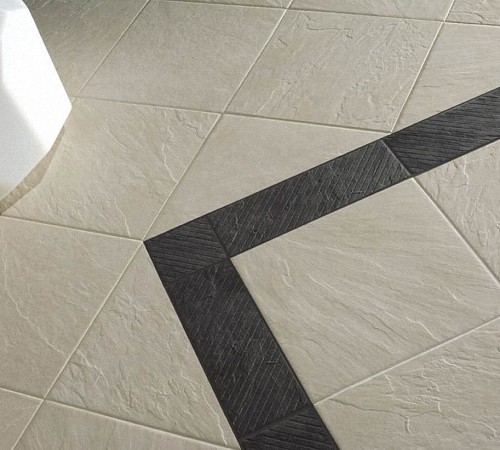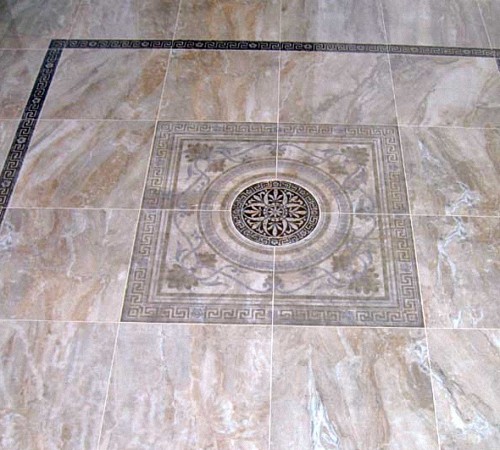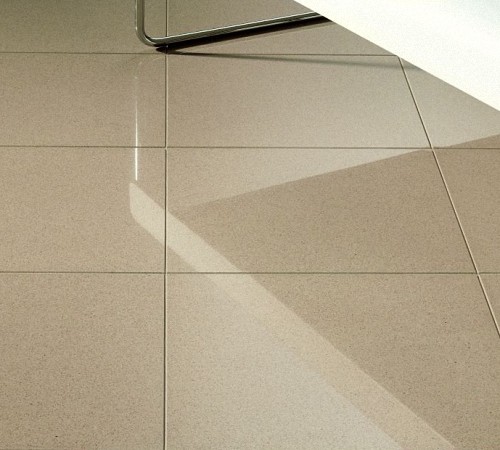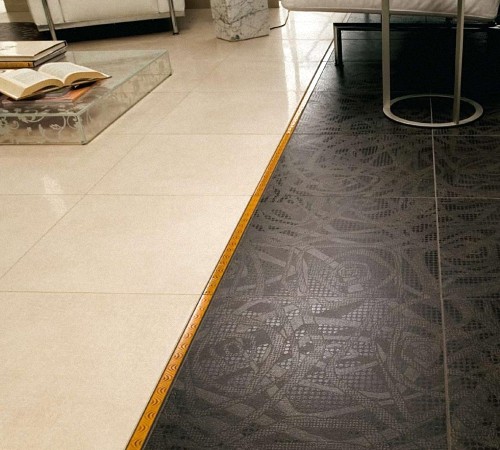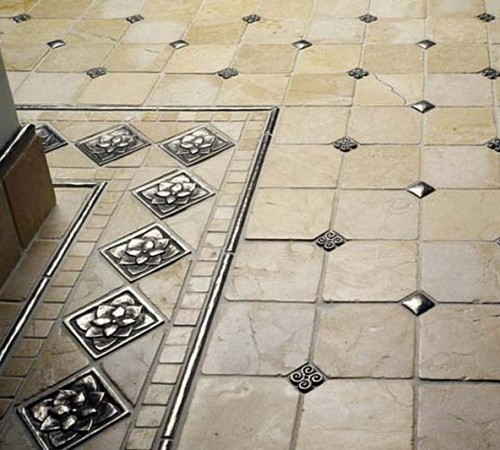
Laying porcelain stoneware Tile
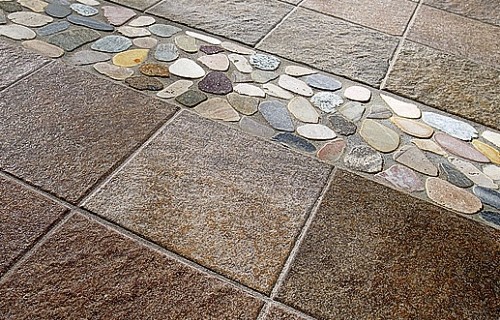
Porcelain stoneware is in great demand when finishing floors inside the room precisely because of its strength and durability. This material is well tolerate mechanical damage and has an acceptable price. But, the duration of operation of porcelain is directly depends on the compliance with the technology of its installation. About how to put a porcelain stoneware on the floor will be talked further.
Content
- Flooring with porcelain stoneware: material features and its types
- Floor porcelain stoneware: laying options
- How to lay out the porcelain on the floor: instructions for performing work
- How to put porcelain tiles on the floor: laying technology
- Laying a porcelain stoneware on the floor with your own hands: Installation on wooden surface
Flooring with porcelain stoneware: material features and its types
Porcelain stoneware is one of the artificial finishing materials. For its production, a semi-dry press method is used, which consists in pressing a special powder and its further burning under the temperature of up to 1350 degrees.
In order to obtain a press powder, the presence of a special homogenized mixture from various kinds of components, such as white-born clay, kaolin, quartz sand, smooth and water.
The initial purpose of the porcelain is a finishing of industrial premises with a high operational load. But, gradually improved the technologies of its manufacture and the material takes great demand when finishing floors in residential premises. For staining of the base mixture, oxides are introduced into its composition, which do not lose color even during the burning process.
Due to the presence of unique properties, the material is widely used in the process of finishing both the facade surfaces and the inner parts of the building. Among the main properties of porcelain stoneware should be allocated:
- strength;
- durability;
- high stability in front of mechanical damage, scratches and abrasion;
- resistant to moisture and temperature drops.
If all technologies were observed during the styling of porcelain stoneware, then its operation is more than twenty years. Due to the fact that the material is distinguished by a variety of shapes and colors, with it, it is implemented by various kinds of designers and architects.
We offer to consider the main advantages of porcelain stoneware:
- low absorption of moisture, and therefore, the material is stable before the formation of mold, fungus and various kinds of contaminants;
- stability in front of various chemical compositions;
- the presence of a beautiful depth and color of the drawing, which is perfectly held throughout the entire period of operation;
- the presence of solid and stable before abrasion of the surface;
- excellent mechanical characteristics and resistance before bending;
- stability in front of thermal shock;
- the possibility of making an anti-slip surface.
There are several varieties of porcelain stonewares that we offer to familiarize yourself:
1. Practices of technical purposes - rather similar to standard granite, is distinguished by non-relief, low-cost, practicality and long-term preservation of the original view.
2. Glazed-type porcelain stoneware - material with the presence of a layer of glaze, which is further burning in special technology. This type of floor covering is highly reliable, although it is unstable to high operational loads and over time loses the appearance of the appearance. This coating is recommended for installation in rooms with low patency, for example, in the living room.
3. Matte variety of porcelain is obtained in the absence of its polishing. This coating has the same properties as standard porcelain stoneware.
4. Installation of polished porcelain stoneware allows you to get an ideal mirror surface. The cost of this coverage is more expensive, since the manufacturing process is characterized by high labor intensity. But the appearance of such a porrite is characterized by effect, although over time the coating is abruptly and turns into a matte.
5. Structured type porcelain stoneware - distinguished by the presence of a relief surface. This coating is able to imitate wooden surfaces: natural stone, various types of fabric, skin and drawings. Aesthetic properties of such a coating are endless. It is also possible to apply the gold inserts on the plates.
6. Porcelain stoneware, which has passed the primary wax processing is called satinized. Mineral salts are applied to the surface of the firing on the surface, thus it turns out to achieve the effect of soft and gloss. This coating is unstable before strong operational loads.
If we consider the classification of porcelain stoneware in the ratio with the size of floor stoneware, then such standard values \u200b\u200bshould be selected:
- 300x300 mm;
- 450x450 mm;
- 600x600 mm.
In addition, options for manufacturing a porcelain stoneware 150x150, 200x200, 150x300, 300x600, 1200x150 mm, etc., etc.
In a ratio with a thickness stoneware for gender, it is necessary to allocate the fact that this indicator is not essential during the selection process. Since the tile of a thickness of 10 mm has the same strength characteristics as a porcelain stoneware, 3 cm thick. Standard, convenient for laying thickness of porcelain stoneware is 30 mm.
The scope of the use of porcelain is wide enough, since this finishing material is used to cover both walls and internal and external floors.
Floor porcelain stoneware: laying options
Porcelain stoneware is distinguished by a variety of colors, sizes and shapes. With a combination of all sorts of porcelain tiles, it is possible to achieve very beautiful and artistic compositions. If the room has an incorrect form, it is better to use standard laying patterns of porcelain stoneware: a rhomatic or rectangular shape.
Note that there are certain subtleties associated with the installation of this material, they are caused by the perception of the total flooring of the floor stoneware, so some points should be taken into account:
- the size of the tile is significantly reflected on the visual decrease or an increase in space, if you choose a large tile, the room will seem small, otherwise - large;
- if you need to visually increase the width of the room, then you should lay out the pattern in the transverse direction;
- with the help of a pass-through pattern, several zones are combined into one holistic space, for separating the zones of quite different patterns or patterns;
- if the tile of porcelain stoneware has light color, then the space is visually expanding.
If the tile is placed at an angle of 45 degrees, then its edges should be placed in parallel with respect to the diagonal areas of the room.
How to lay out the porcelain on the floor: instructions for performing work
To perform work, you will need:
- roulettes or steel ruler, which will help measure the room;
- a construction level that allows you to check the mechanism of laying and surface;
- marker - will provide markup;
- rubber brand;
- two spatulas - standard and tooth;
- the reservoir in which the adhesive composition will be missed;
- drills with a micro-type nozzle;
- playcores or Bulgarians on which there is a diamond circle for cutting.
The materials will require:
- porcelain tile;
- silicone sealant;
- adhesive composition;
- grouts, with which the seams will be placed;
- crosses - to ensure the mechanism of laying;
- primers, which will be processed base;
- water.
The following is determined by the laying of the material, the order of the tiles, their drawing, the thickness of the glue and the laying method. There are several options for installing porcelain stoneware:
- seamless;
- butt.
The first option is based on the use of exclusively identical tiles, in addition, it is required to ensure the equal length of dusting and uniformity of the entire coating.
Among the advantages of seamless styling, it is distinguished by obtaining an attractive, homogeneous floor and savings on the purchase of grouts.
Floor porcelain books, photo:
The method of dusting two tiles is more popular, in which free space remains between them. Before starting with the tile, a protective film is removed. In the presence of a protective wax layer, the material should be treated with warm water and cleaning agents or spatula.
The next stage of work is based on the preparation of the base on which the laying of the ceramoranite will be made. It must be even, with the lack of drops, cracks and other defects. If there is an uneven base, it needs preliminary alignment. If the surface is made of concrete, then the new screed is required. The main requirements for the surface is its dryness and smoothness, no dirt and cracks.
In the presence of a glossy or brilliant surface, it will be necessary to carry out its stripping before it is until it becomes matte. Note that the overlap must have a high bearing capacity, since the floor is subject to a certain kind of loads.
The minimum work temperature is 5 degrees of heat. Do not lay the porcelain stonework with the included heating devices.
Since the porcelain stoneware is characterized by zero moisture absorption, then glue, with the help of which it is stacked, should provide a high level of adhesion tiles and gender. Therefore, it is not recommended to use a cement-based solution, and it is better to acquire an adhesive substance, which contains polymers.
Choosing glue, Consider the recommendations of the manufacturers, and the thickness of its application depends on the characteristics of the porcelain stoneware and the load on the floor indoors.
How to put porcelain tiles on the floor: laying technology
The process of laying alar stoneware implies primarily the right choice of tools and materials for work. Materials will require:
- ridge spatula;
- rubber hammer;
- cross;
- grout.
The size of the tile depends the size and width of the spatula. The more tile, the greater the teeth in the spatula. So that the width of the seams was the same, use the cross.
Before laying, measure the middle of the room. To do this, use the cord that is pulled from one corner of the room to another around the perimeter of the wall.
Start laying the tile from the middle of the cord to get the most symmetrical sections. If there are protrusions of the walls or integer angles, then the laying begins on them from the installation of whole tiles, and in the inner corners the tile is cut.
If there are passes between two rooms, then the location of the seams is carried out in such a way as to achieve the effect of transition from one room to another. If there is a niche, follow the asymmetric styling.
Laying the porcelain stoneware on the floor begins with applying a well-mixed adhesive composition on the surface of the tile with a smooth spatula. In order to evenly dissolve glue, a spatula with teeth is used.
After applying glue, it is necessary to immediately lay the tile, the maximum waiting time is fifteen minutes.
The tile is placed by a rib in the rib. Next, the surface with glue is slightly pressed, and the tile moves to the side to comply with the pile. Note that the glue should fall into the slots between the tiles, the cross are installed in them.
To verify the laying evenness, the level is used. Changing the position of the previously laid tile occurs no later than ten minutes after it is mounted. If there is a break in work, keep in mind that the porcelain stoneware, which was laid earlier, gives a small shrinkage, and the new tile should be slightly higher than the previously installed.
Note that the adhesive seam should not be empty, as there is a risk of tile cracking. The glue dries over 24 hours, and the full process of laying is completed after three days.
When the tile is laid, and the glue is already drying, proceed to carry out work on the grout of the seams. To do this, a certain color of the grout, which will coincide with the color of the tile.
To underline the pattern, choose contrast tones of the grout, and to obtain a homogeneous surface, you should give preference to the grout of the same color as the tile.
Before working, check the quality of the seam and the absence of foreign materials in it. For work, use a special tool in the form of a small rubber spatula.
When using standard cross, the seam size will be from 3 to 5 mm. To fill the slots formed between the surface of the floor and the wall, use silicone sealant.
It is recommended to apply grout in a diagonal position relative to the seams. To remove material residues, use a sponge and warm water. After 14 days, the surface is ready for constant washing.
If the result of the work has such features, the tile is laid high quality:
- there are no bulges or depressions;
- the composition looks holistic and beautiful.
Laying a porcelain stoneware on the floor with your own hands: Installation on wooden surface
Possible option laying a porcelain stoneware on a wooden base. In this case, it will take the removal of an old coating and strictly horizontal exhibiting lag. Next, the surface is treated with an antiseptic, and between lags the material is stacked in the form of clay.
Self-tapping screws will help to fix the draft floor on the surface of the lag, porcelain stoneware will be laid on it.
But before that, it will be necessary to carry out work on the installation of waterproofing, for this there is enough polyethylene film.
This follows two options for performing actions:
- installation of a metal mesh, for fixing which the screws are used, the installation of beacons and the construction of a cement screed or filling of the floor using the mixtures of a self-leveling type, then laying a porcelain stoneware;
- the second option involves the use of a dry screed, that is, laying on a waterproofing coating, a layer of drywall with moisture-repellent properties, a variant of laying of gypsumless sheets or cement-chipboard is possible, then the surface is primer and styling of porcelain stoneware.
There is an option for installing porcelain stoneware on the surface of plywood. In such a case, its thickness must be at least 3 cm. After laying plywood on the lags, it grinds and cleaned from garbage. Next, double applying the primer, and after its drying, porcelain stoneware is stacked.
Please note that the glue for mounting the tile must have a polyurethane base to glue the wooden base with porcelain stoneware.
Laying of porcelain stoneware on the floor, video:




